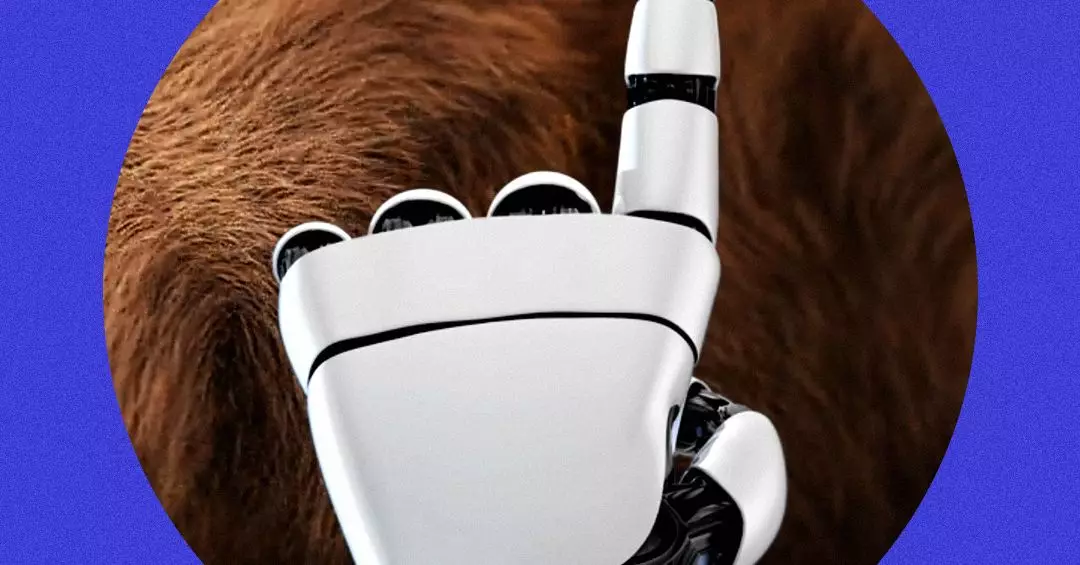In the ever-evolving landscape of automation, Amazon has taken a remarkable leap forward with its innovative creation, the Vulcan robot. This state-of-the-art robot not only showcases the potential of robotics in modern warehousing but also emphasizes the importance of touch in robotic functionality. Far removed from the clumsy movements typically associated with machines, Vulcan is designed to navigate the complexities of inventory management with a level of precision that mirrors human dexterity.
Aaron Parness, Amazon’s director of robotics AI, acknowledges the essence of tactile sensing in robotic operations. By enabling Vulcan to engage physically with its environment, Amazon is bridging the gap between human and robotic tasks. His insights underline that the efficiency of this robot hinges on its ability to make contact with various items as it stows or retrieves products, presenting a significant advancement in the operational capabilities of robots in fulfillment centers.
Engineering Marvel: Design and Functionality
At the core of Vulcan’s design is a versatile robotic arm tailored with a unique spatula-like appendage for sifting through shelves. This mechanized arm is complemented by suction mechanisms that facilitate effective grabbing. With a multitude of sensors strategically situated at joint locations, Vulcan can assess the edges and contours of items, allowing it to navigate an array of products with ease. The software that drives this robot’s intelligence leverages machine learning, which transforms sensory data into actionable insights, thus refining the robot’s operations.
Moreover, Parness describes this robotic initiative as a blend of hardware innovation and sophisticated software interpretation of force and torque, nuanced enough to form a part of the decision-making loop during its interactions. The culmination of these elements marks a notable step towards a future where robots could handle an increasing breadth of warehouse tasks traditionally reserved for humans.
Smoothing the Workflow: Collaborating with Human Workers
Amazon’s decision to position Vulcan alongside human pickers reaffirms the company’s commitment to collaboration between man and machine, rather than outright replacement. As emphasized by Parness, Amazon does not subscribe to the notion of complete automation within their fulfillment centers. Instead, Vulcan aims to alleviate the physical demands on human workers by managing items located in hard-to-reach areas. This symbiotic relationship is poised to enhance productivity while also safeguarding the well-being of the workforce by reducing strain associated with manual labor.
The idea is not just to replace human effort but to complement it, thereby improving overall efficiency. For instance, when Vulcan encounters a task it struggles with, the responsibility seamlessly transfers back to human workers, ensuring that every order is completed accurately and efficiently.
The Challenges Ahead for Robotic Touch
Despite the encouraging strides made by Vulcan, experts like Ken Goldberg from the University of California, Berkeley, highlight that the journey towards achieving human-like tactile sensitivity in robots is still fraught with challenges. Current robotic touch technology, while advancing, remains rudimentary compared to the intricate range and sensitivity of the human touch. Goldberg’s commentary resonates with the essence of how vital nuanced tactile feedback is in tasks requiring finesse.
As Amazon’s initiative underscores, the interplay between technology and human touch remains essential, as robots have yet to replicate the comprehensive sensitivity found in human skin. This limitation serves as a reminder of the complexities of human interaction and the nuances of manual tasks that are not simply mechanical but rich in sensitivity and judgment.
A Vision of Future Automation
With the introduction of Vulcan, Amazon is not only setting a precedent for robotic integration in warehousing but also redefining what the future of work looks like in e-commerce. As automation continues to increase, the role of robots like Vulcan will likely expand, embracing more intricate tasks that require both strength and precision. Nonetheless, the philosophy that underpins Amazon’s approach is clear: technology should enhance human capabilities rather than completely replace them.
The essence of this innovation resonates beyond mere efficiency gains; it invites us to rethink our relationships with technology in work environments. As businesses increasingly adopt similar advancements, the ongoing dialogue about the balance between automation and human contribution will be of paramount importance, ensuring that the transition to a more automated world is both thoughtful and inclusive.


Leave a Reply